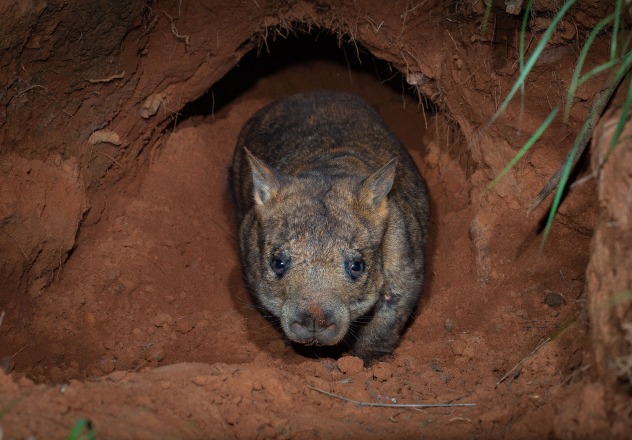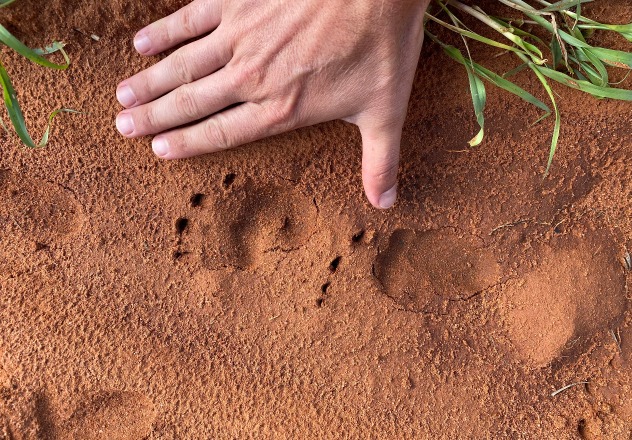The Northern Hairy-nosed Wombat is the largest burrowing marsupial in the world, and one of Australia’s rarest mammals. In 2021 AWC entered into a partnership with the Queensland Government to help conserve this species and establish new populations.


 Brad Leue/AWC
Brad Leue/AWC
AWC has formed a partnership with the Queensland Government to help conserve this species and establish new populations. AWC joined the Recovery Team and is assisting with conservation efforts at the two sites which protect the remaining populations. AWC and the Queensland Government hope to establish further populations at additional sites in coming years.
 Andy Howe/AWC
Andy Howe/AWC
The Northern Hairy-nosed Wombat’s preferred habitat is open eucalypt woodland, vast tracts of which were cleared for pastoralism in the 19th and 20th centuries. Competition with livestock and rabbits also poses a threat, and dingoes and wild dogs prey on wombats. Historically, this species was persecuted directly by European colonisers; in 1884 more than a thousand were shot on a single property in the NSW Riverina. By the 1980s just one population clung to survival in an island of remnant bush at Epping Forest.
When numbers dropped to just 35 individuals, the Queensland Parks and Wildlife Service established a dedicated program to protect the Epping Forest wombats. The population has steadily recovered, aided by a 20-kilometre fence excluding Dingoes and wild dogs from the park, constructed in 2002.
 Brad Leue/AWC
Brad Leue/AWC
Description
Northern Hairy-nosed Wombats are the largest of Australia’s three wombat species, growing to a metre long and weighing up to 30 kilograms. They have a distinctive appearance with a broad nose, pointy ears, soft greyish fur and faint black eye patches. They use their strong muscular forelimbs and long claws to excavate vast burrow systems.
Ecology
Northern Hairy-nosed Wombats can live to at least 30 years, spending most of their time underground and emerging at night to feed on grasses and sedges. Females breed once every two years in favourable conditions, giving birth to a single joey which continues to develop for 9-10 months in the pouch. Breeding is reduced in drought conditions.
Range and abundance
Northern Hairy-nosed Wombats are restricted to two locations in Queensland. The only relict wild population is at Epping Forest National Park, with an estimated 300 individuals. A second colony was established in 2009 at Richard Underwood Nature Refuge near the town of St George in southern Queensland. The refuge covers 130 hectares leased by the Queensland Government from private landholders. It is surrounded by a fence which excludes Dingoes and wild dogs and deters foxes and cats. An estimated 15 wombats are present at this site.
Help protect the critically endangered Northern Hairy-nosed Wombat
Donate nowThe Golden Bandicoot is a ground dwelling marsupial that is largely nocturnal and solitary.
The northern bettong is a small, grey, lightly-built macropod with a black crest on the end of its tail.
The Bridled Nailtail Wallaby was believed to be extinct for much of the 20th century, until the chance discovery of a surviving population in 1973. AWC reintroduced a...